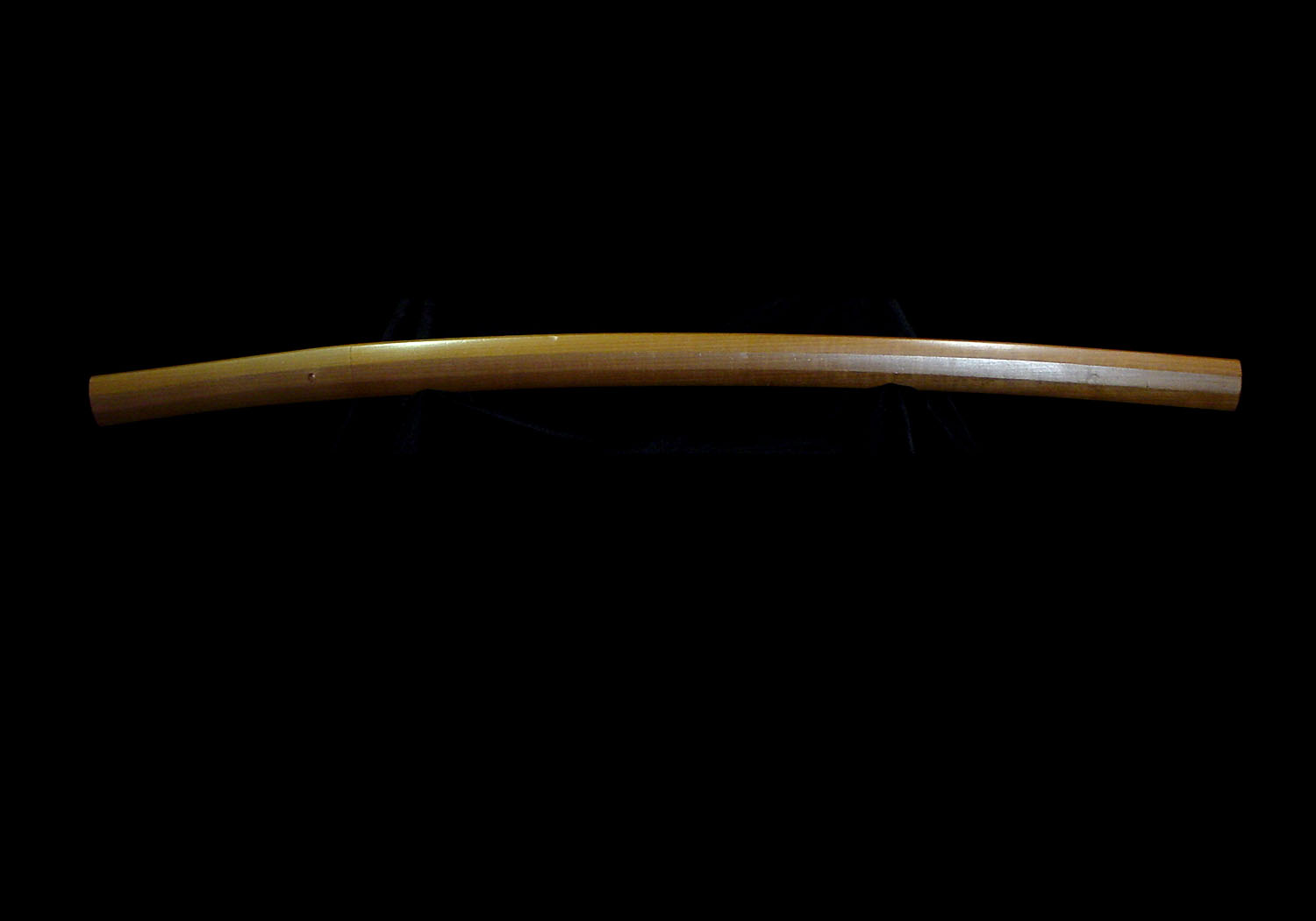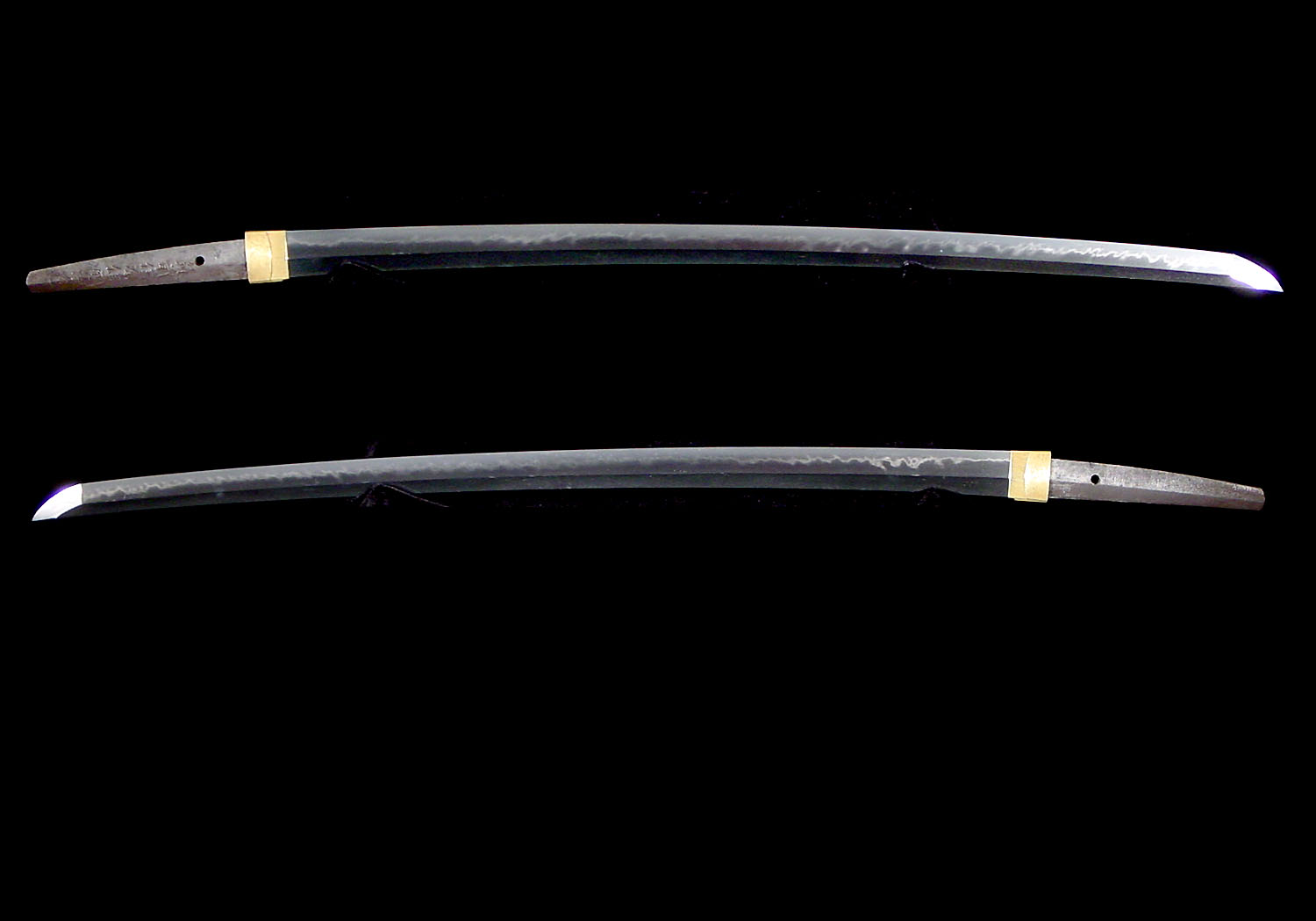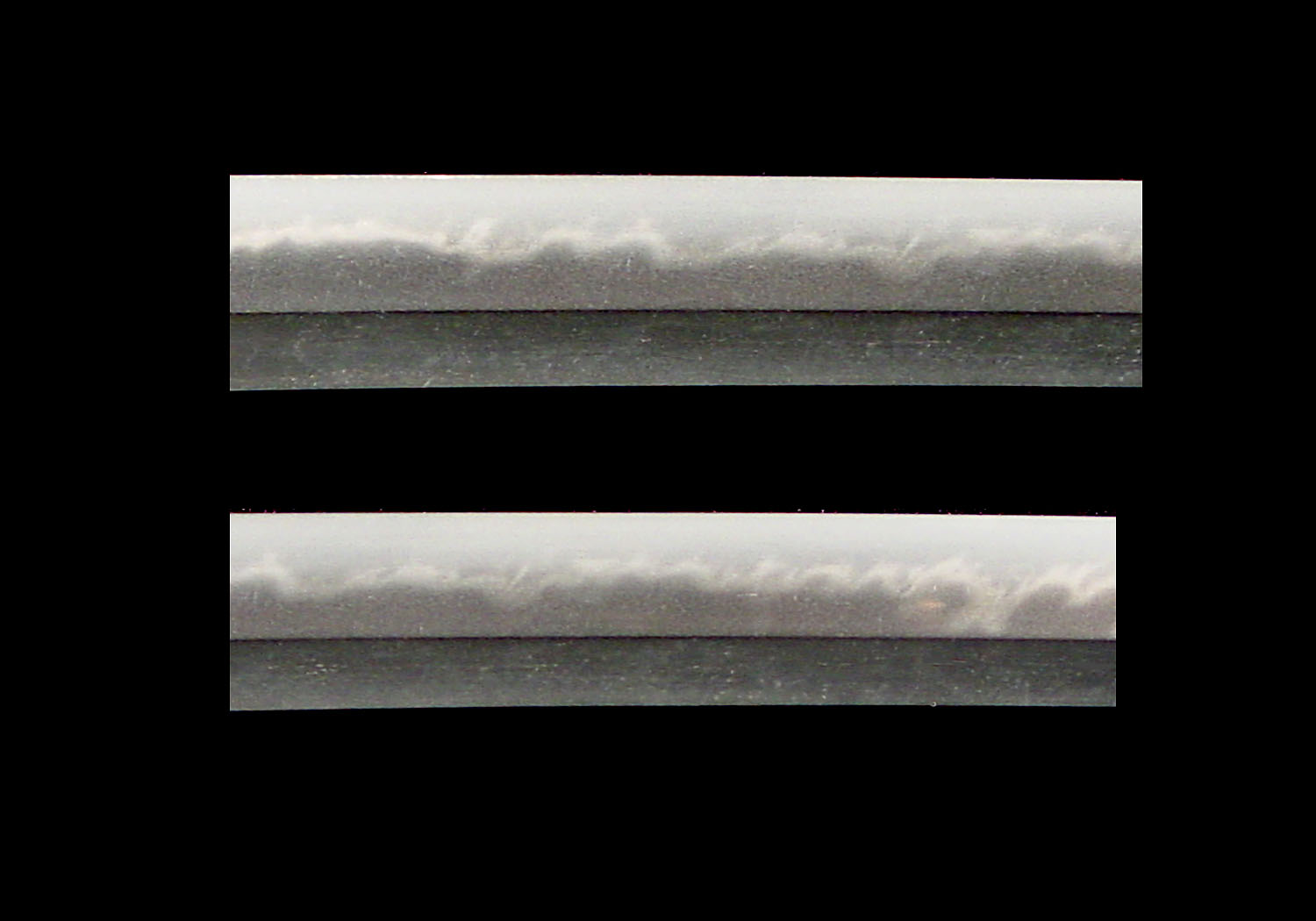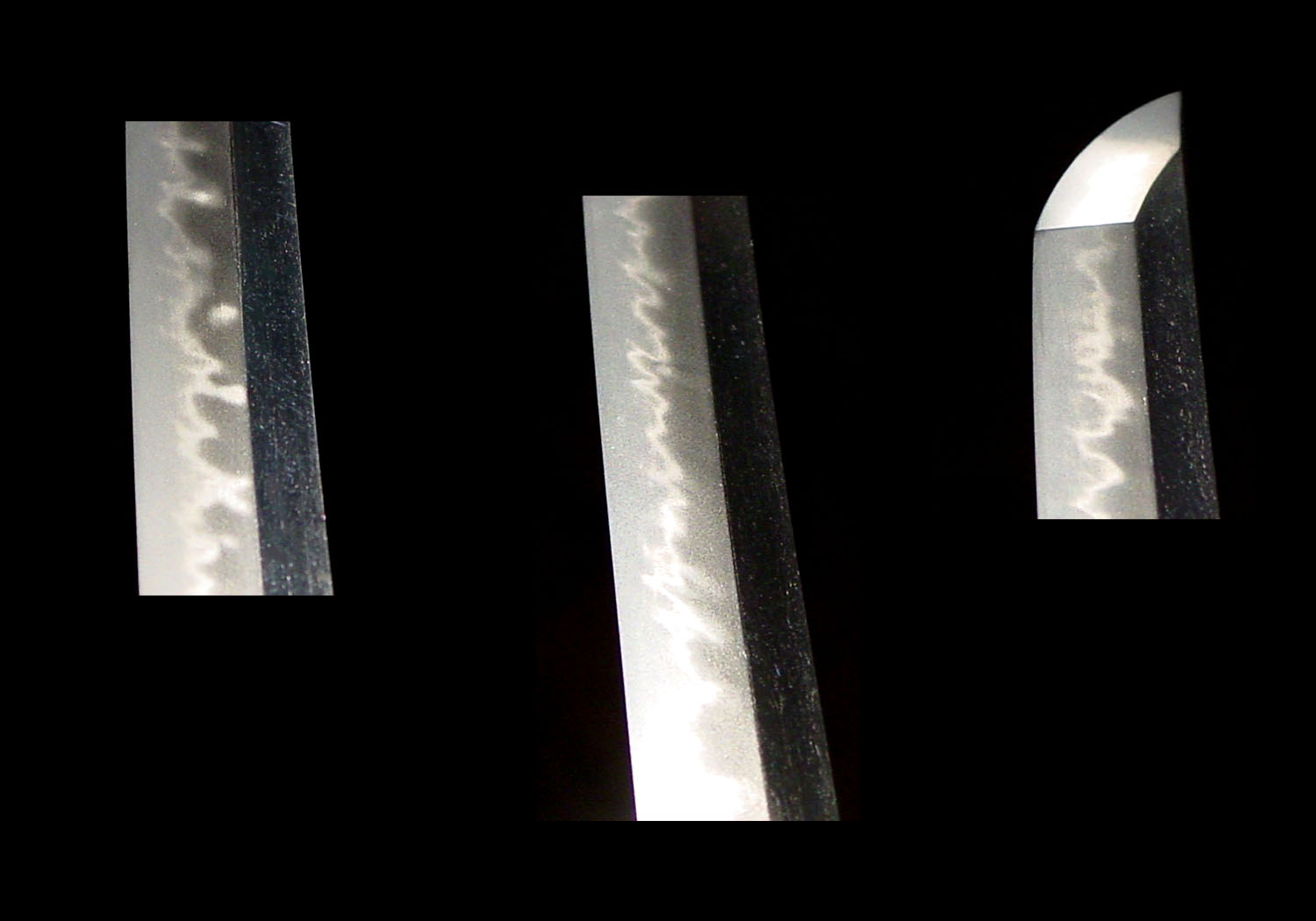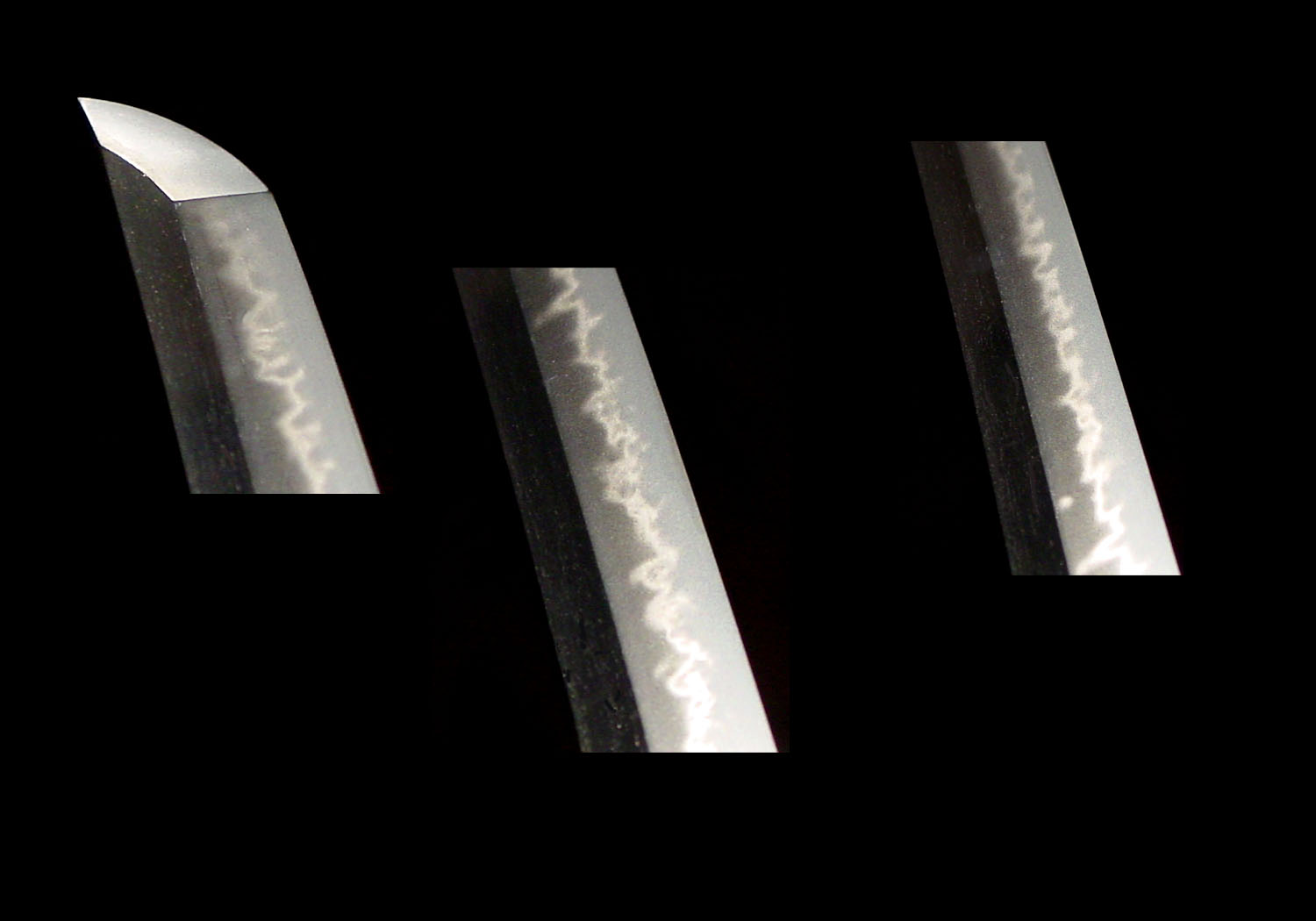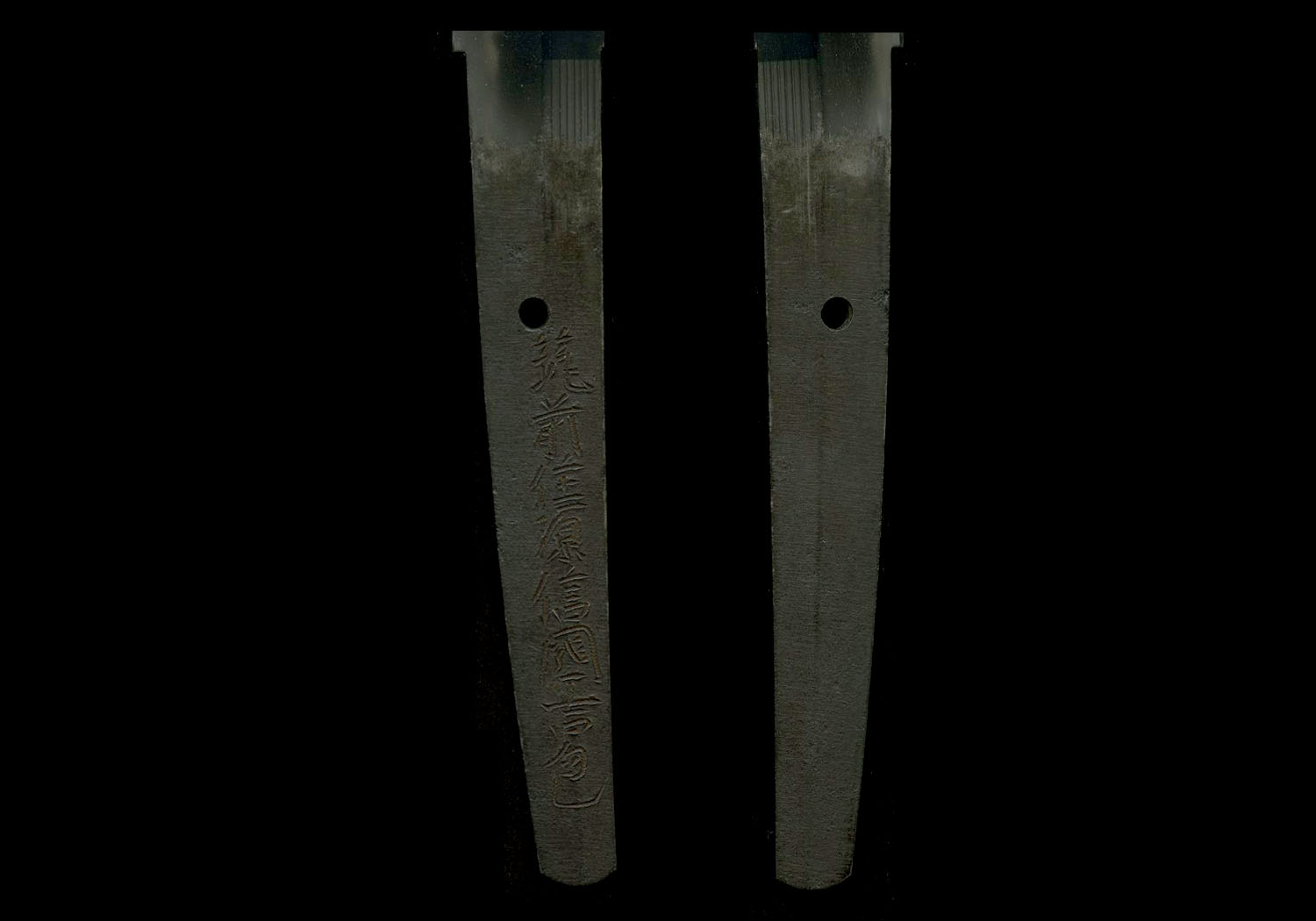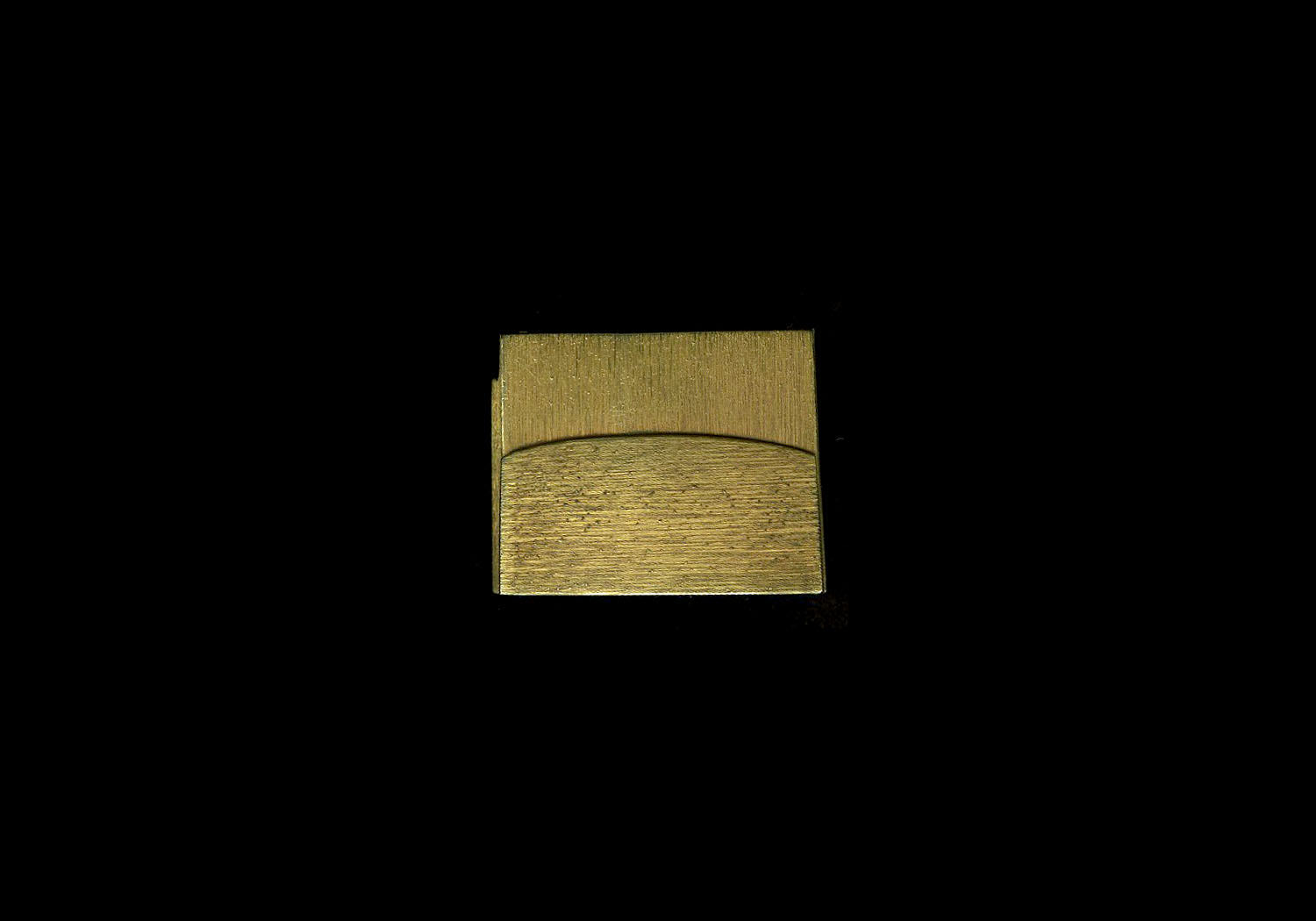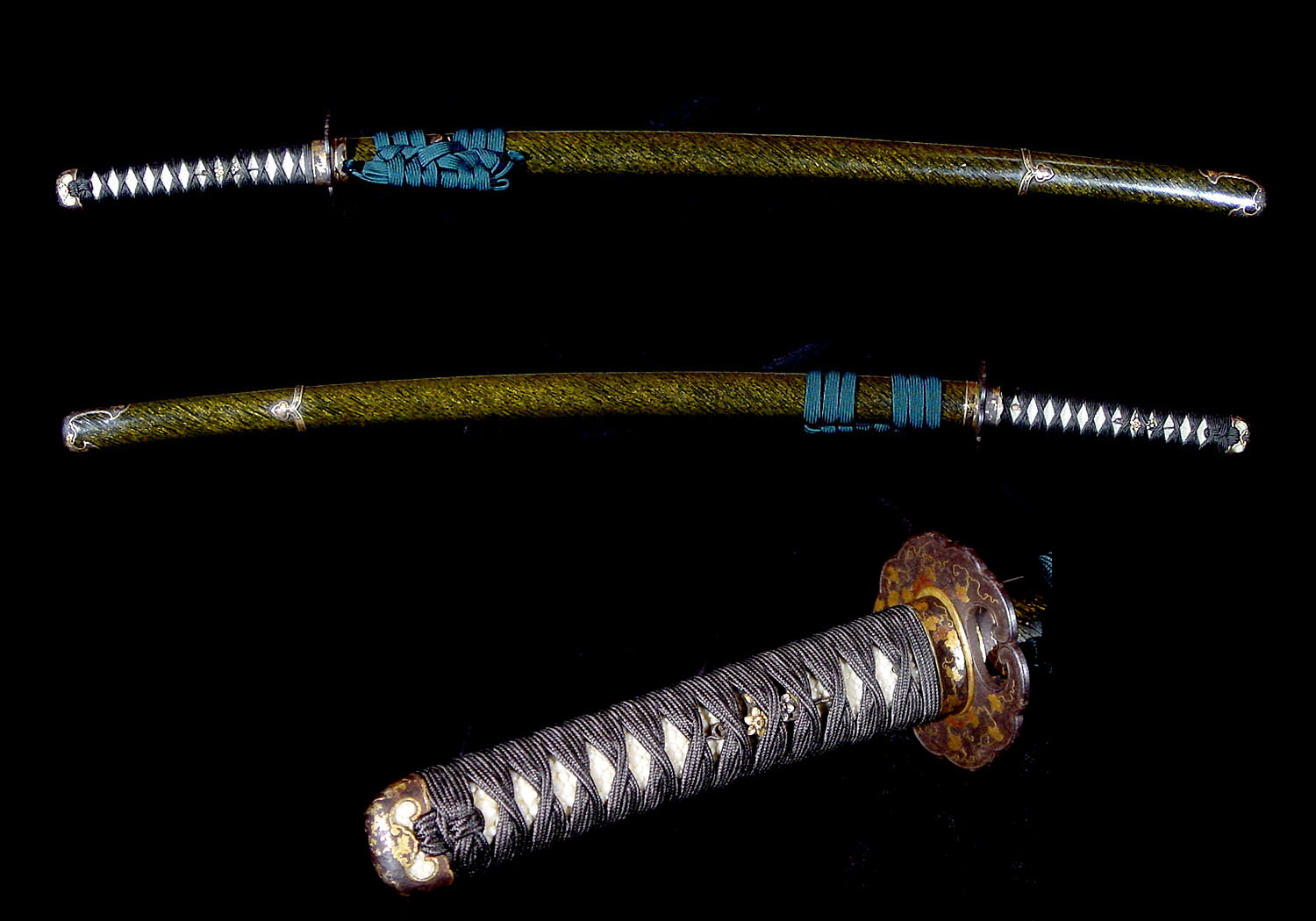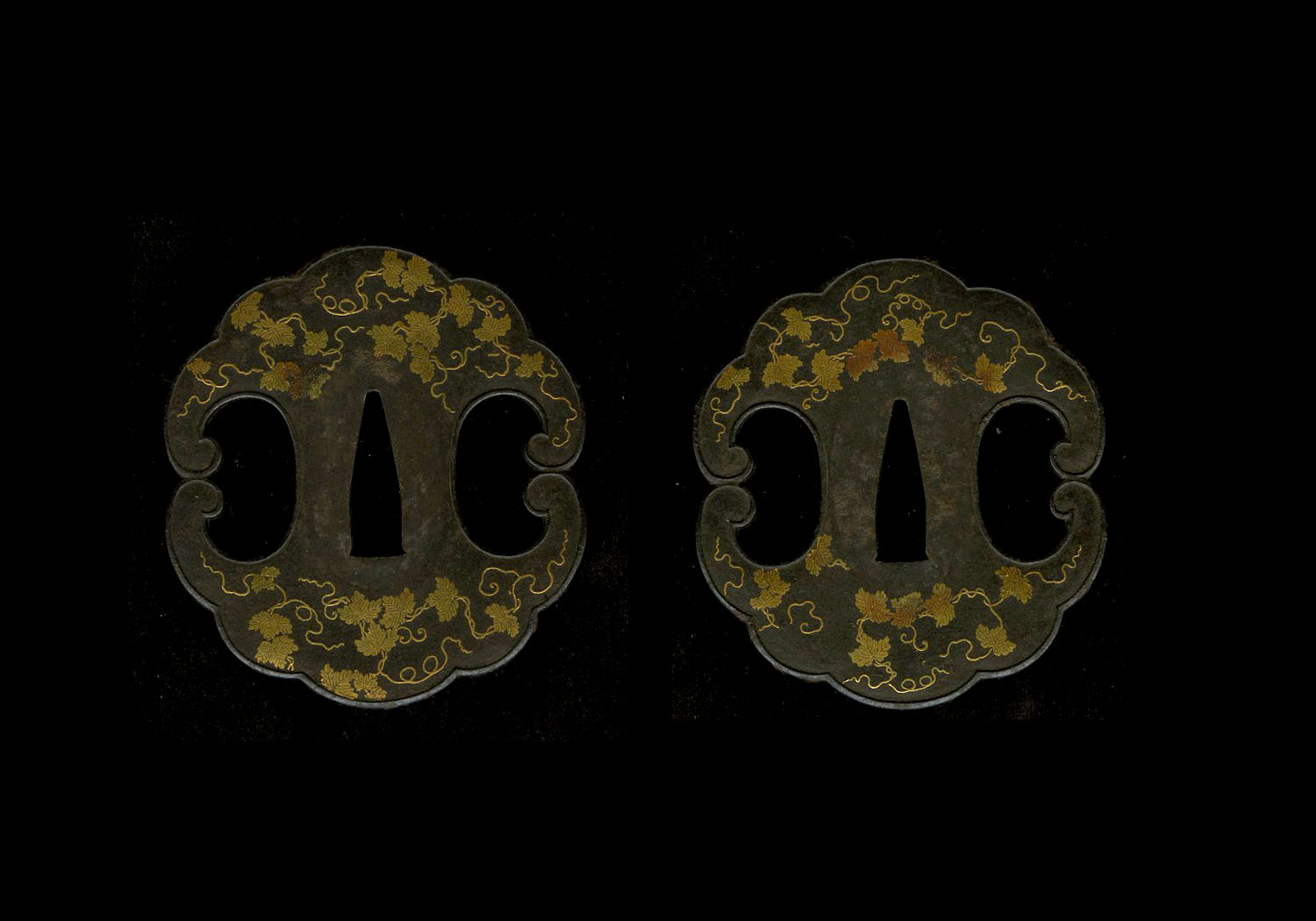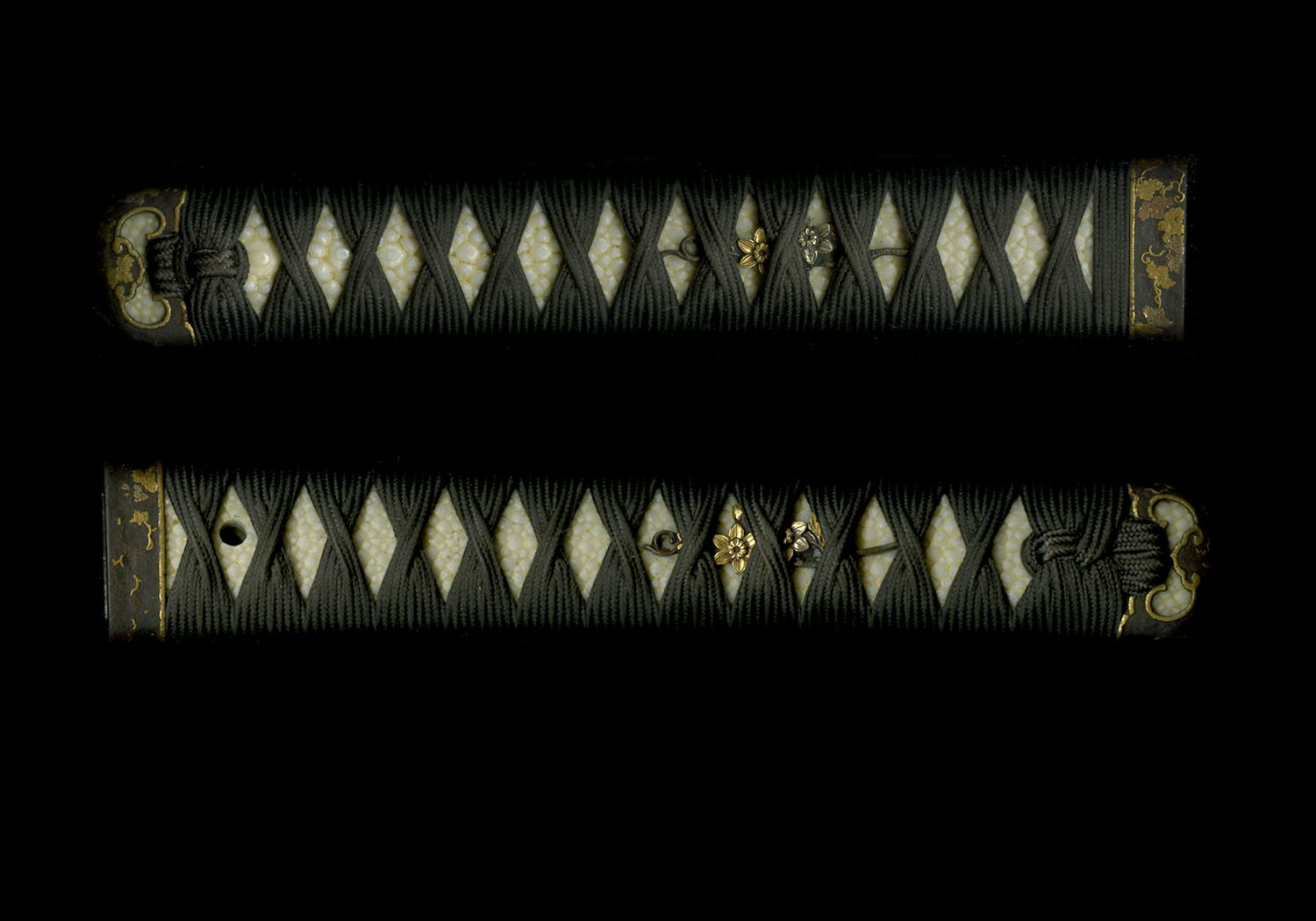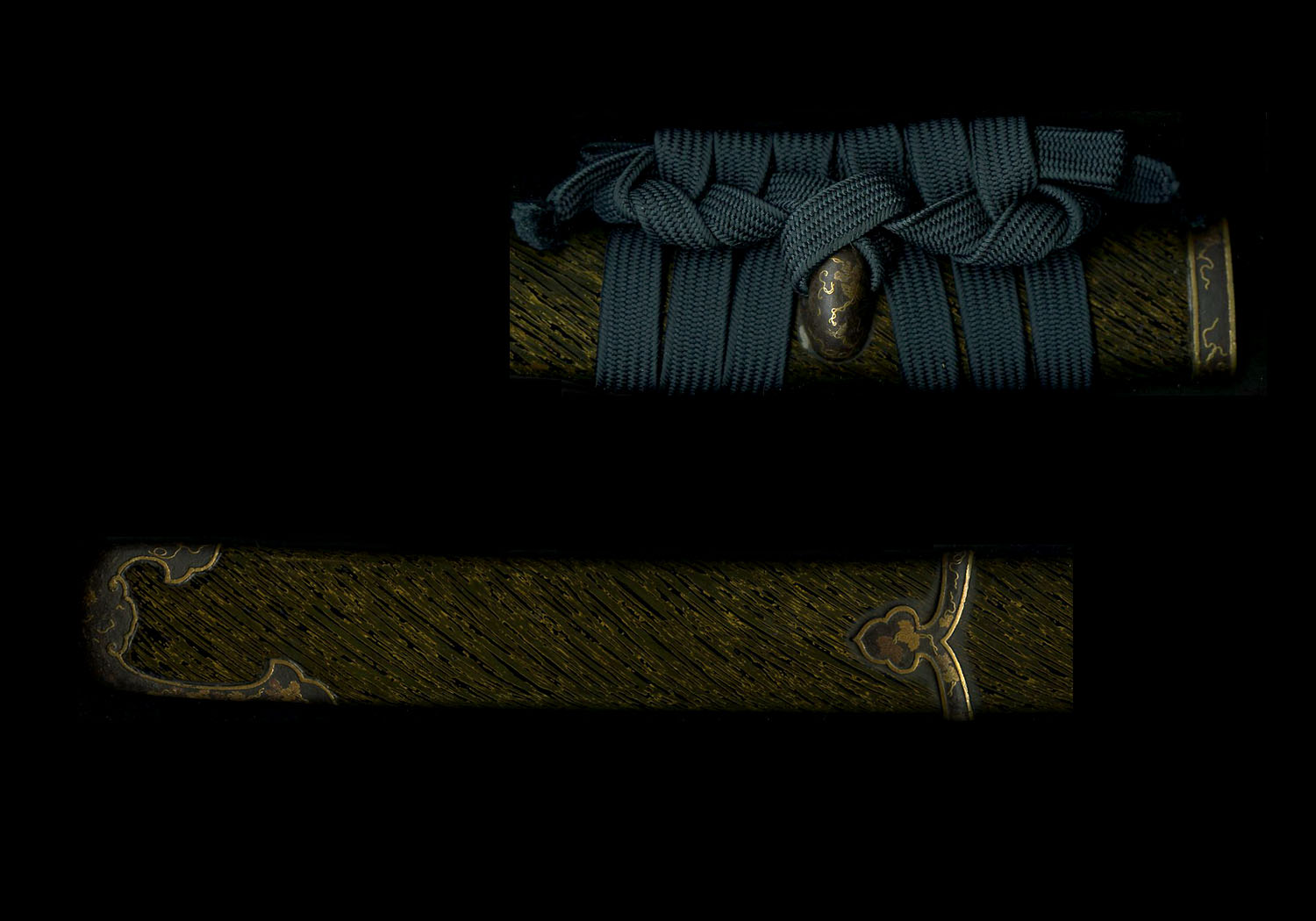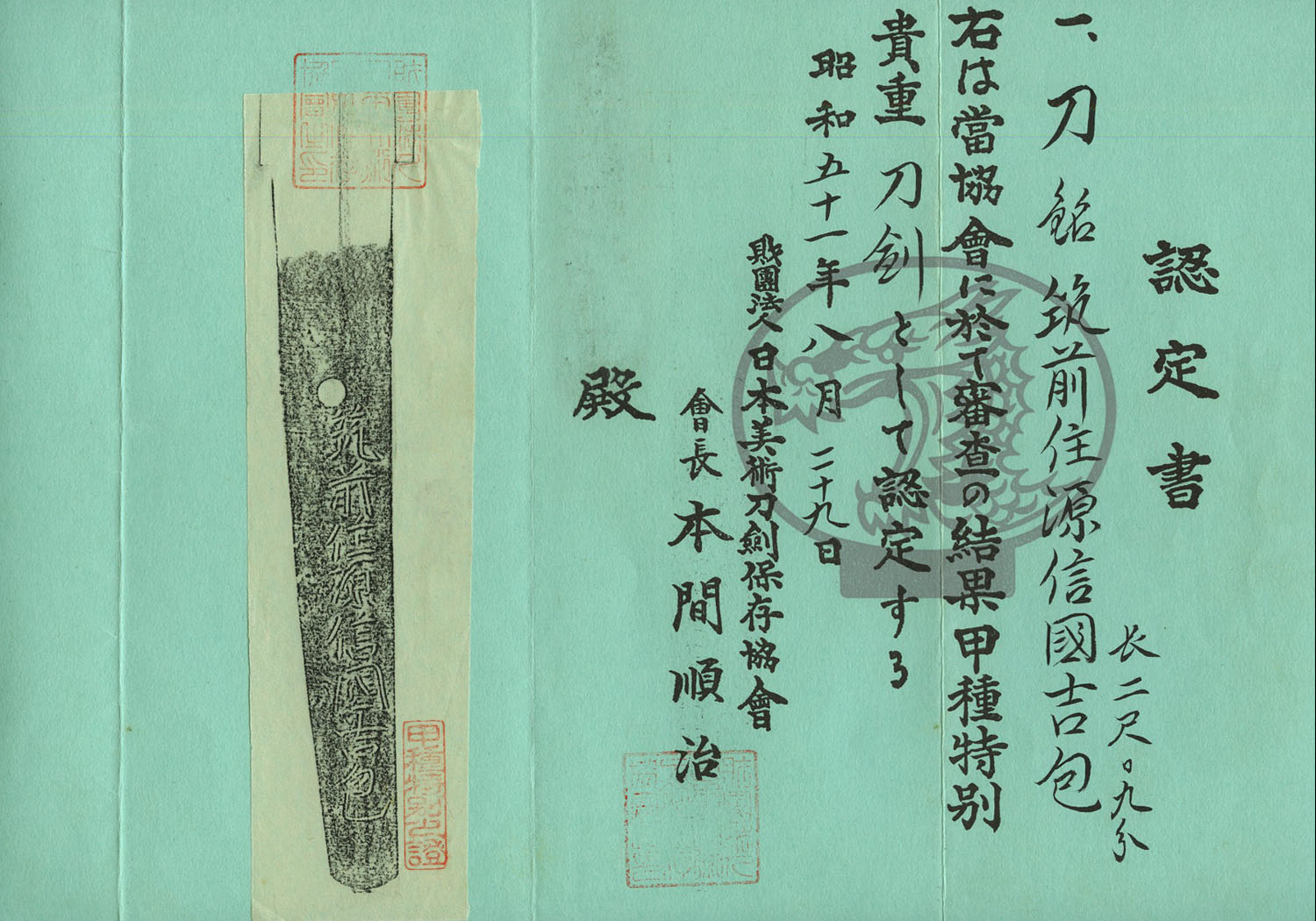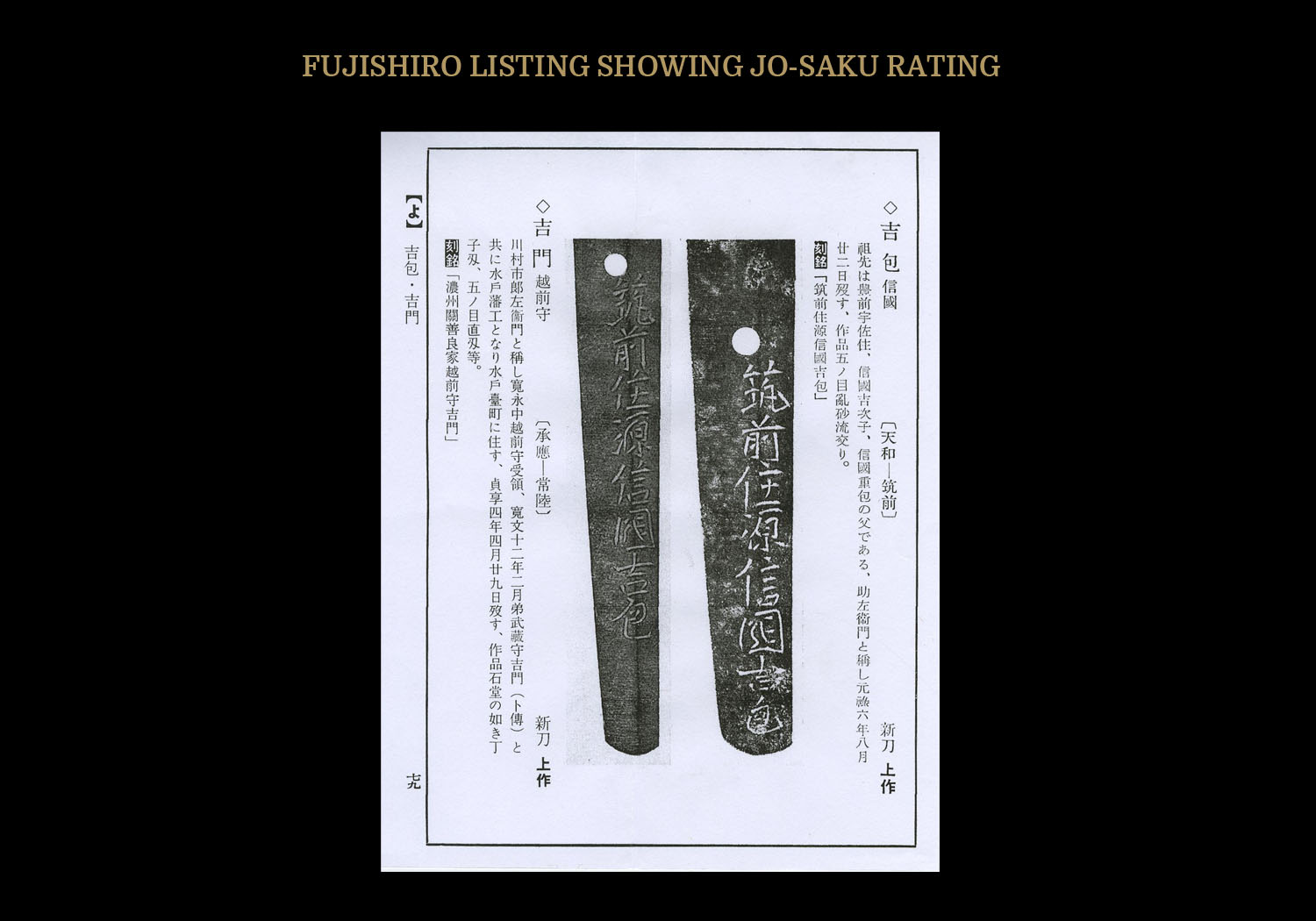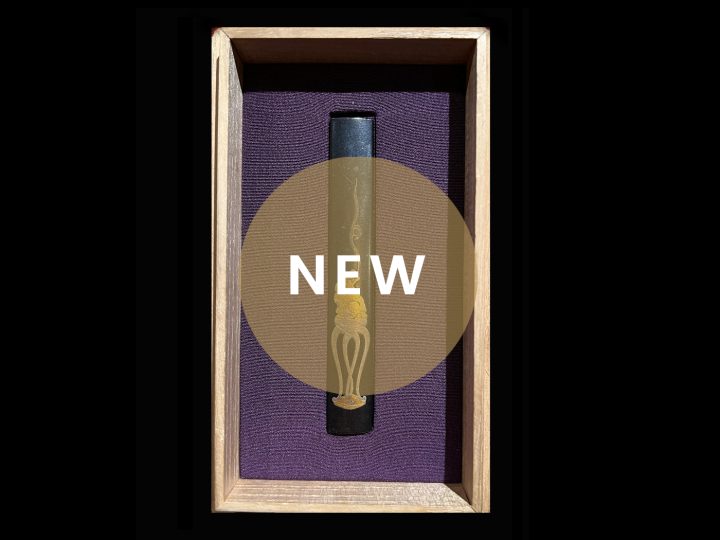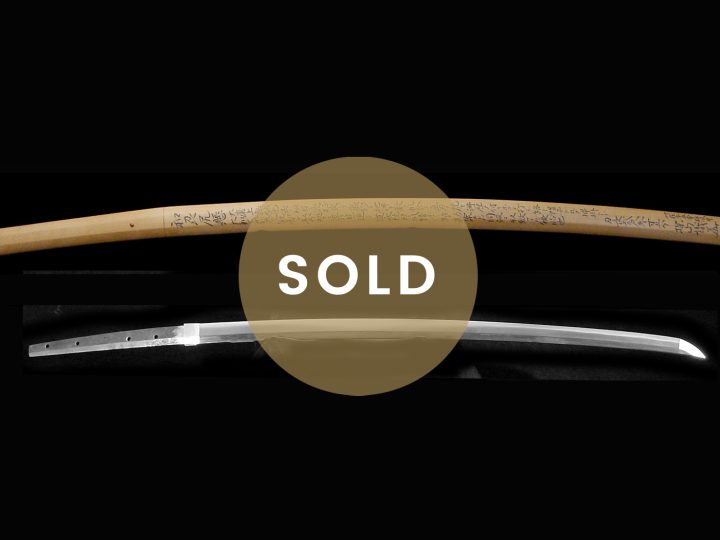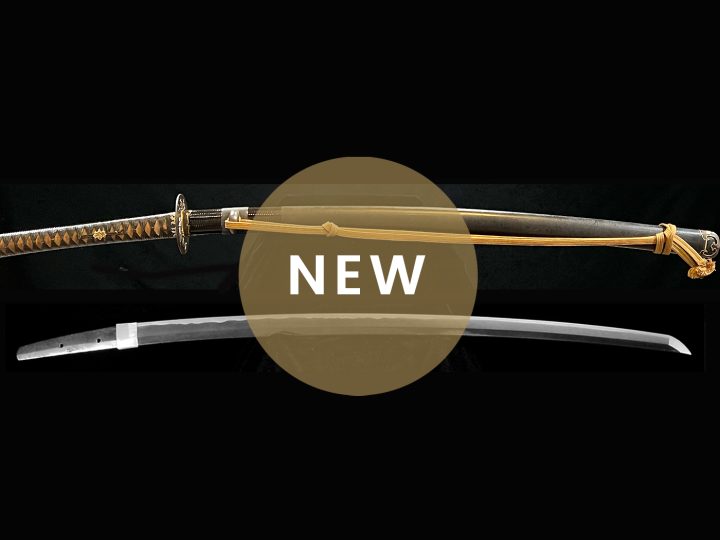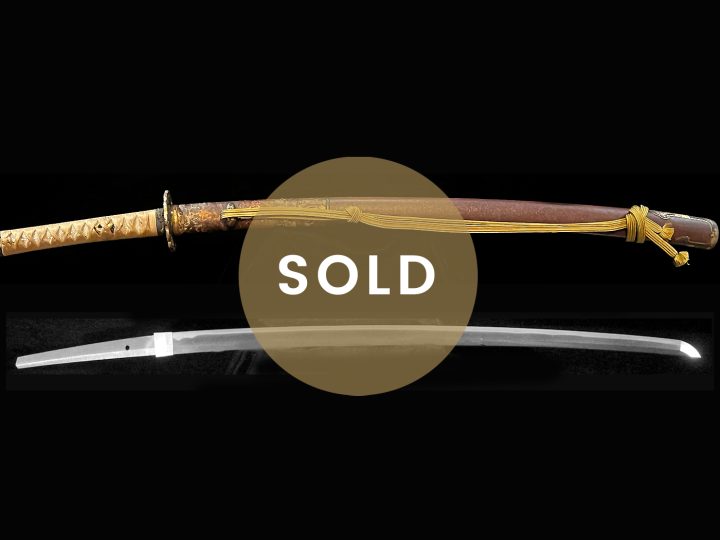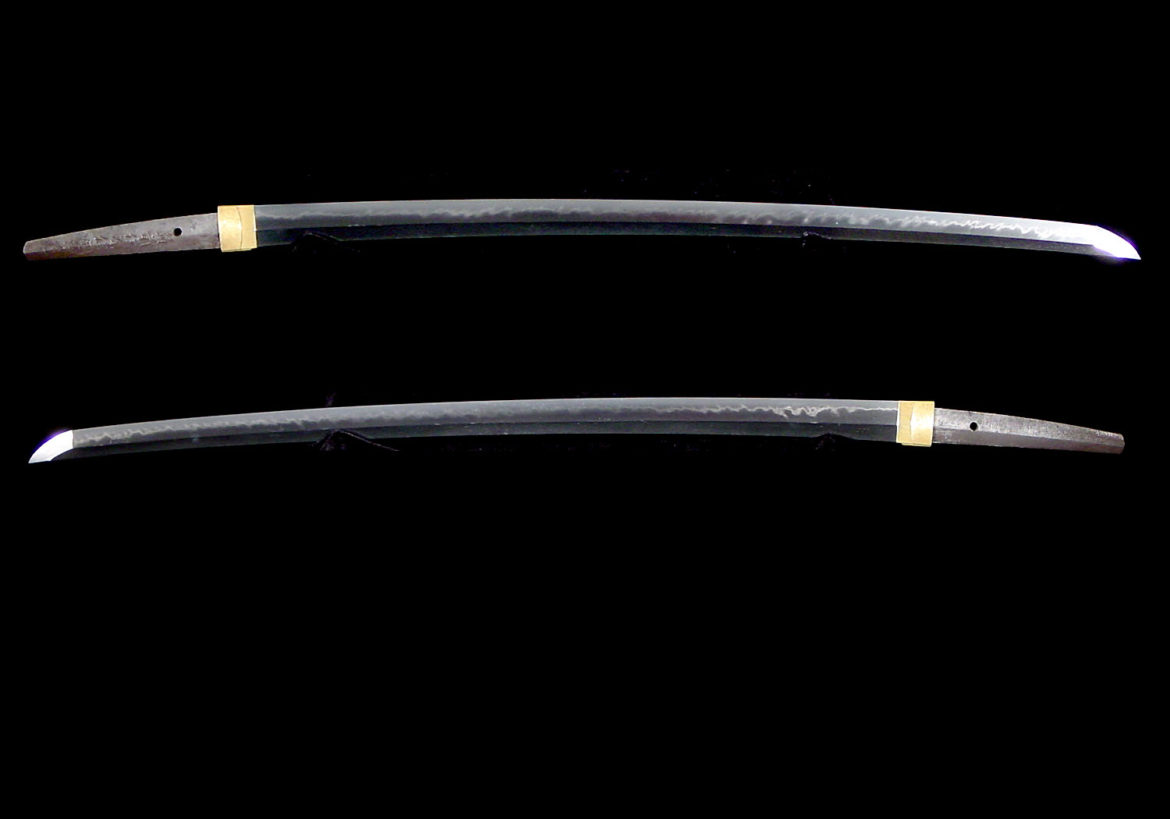
This is a very attractive katana by the well known Chikuzen smith, Nobukuni Yoshikane. He was called Sukezaemon and was the son of Nobukuni Yoshitsugu. He was later the father of Nobukuni Shigekane.
He worked in Chikuzen province around the Kanbun and Tenwa eras (1661-1681). He passed away on August 22, 1693 (Genroku Rokunen Hachigatsu Nijûninichi). Yoshikane is rated as a Jo-saku maker by Fujishiro and is given 35 points by Hawley.
This katana is very typical of his style of work. It has a nagasa of 25 inches or 63.5 cm, a moto-haba of 1.22 inches or 3.1 cm, and a saki-haha of 0.85 inches or 2.2 cm. The kasane is 0.28 inches or 0.7 cm. It has a typical Kanbun shinto sugata with a stout shape, thick kasane and a shallow sori. It also has a relatively large chu-kissaki.
The jihada is a very tight ko-itame hada with masame hada in the shinogi-ji. There are areas of tobiyaki together with many small areas of ji-nie almost mirroring the tops of the peaked gunome. The hamon is a peaked gunome-midare sunagashi majiri as is typical of this smith. The sunagashi majiri (mixed in) adds depth and beauty to the overall appearance of the hamon. The habuchi is nioi deki covered by ko-nie.
The bôshi is midare-komi and fills almost the entire kissaki. There is a ko-maru near the top with a short kaeri.
The nakago is ubu and the blade is signed Chikuzen Jû Minamoto Nobukuni Yoshikane (筑前住源信国吉兼). It is not dated. This blade comes with two sets of NBTHK papers. The first is an older set of Kôshu Tokubetsu Kitcho Tôken papers from the NBTHK dated 1976. There is also a set of Hozon Tôken papers dated just recently in February of 2017. I just purchased this sword in Japan where it is common to only get Hozon papers to verify the authenticity of the signature and not to submit a sword for the higher Tokubetsu Hozon papers because of the added expense. I see no reason that this sword should not be awarded Tokubetsu Hozon papers if submitted for such.
Accompanying this sword is a fine set of Higo han-dachi koshirae. All of the metal fittings of this koshirae (except the menuki) are matching. They are of typical Higo style being made of iron with gold and copper flowers and tendrils inlaid to create a beautiful pattern. The menuki are flowers done in a gold and silver wash and are original to this mounting.
PRICE: SOLD

